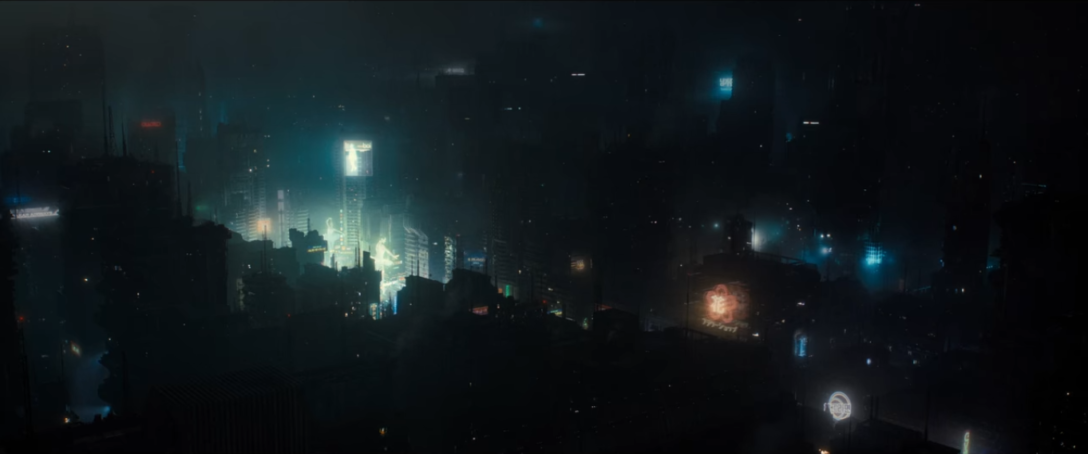Before I begin this review I feel as if I should provide a short disclaimer. As I have mentioned before, the original Blade Runner, directed by Ridley Scott and released in 1982, is one of my favourite films of all time. When Blade Runner 2049 released, helmed by new director Denis Villeneuve, I was worried that it wouldn’t, couldn’t, live up to the heights set by the original. It had been thirty-five years. Would the aesthetic that made the first film such a cult classic be able to be recaptured with a new director? Surely there was no way Blade Runner 2049 could match its predecessor.
I was wrong.
Blade Runner 2049 is an amazing film. It excels in the areas that the original film did not, and whilst it does have its flaws, those flaws aren’t enough to diminish from what is overall a sequel that rises well above just being merely “satisfactory”, as I had initially worried about.
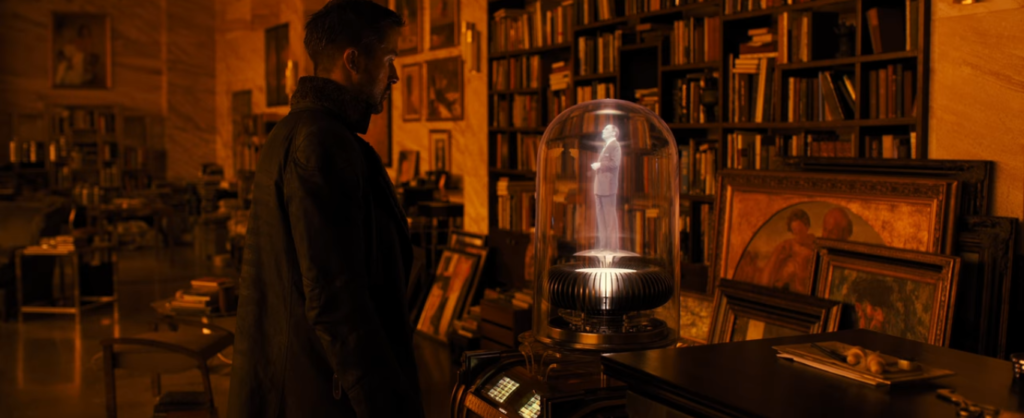
The film’s biggest strengths are the plot, the characters, and the acting. Without giving too much away, the plot is set thirty years after the original film (hence the title Blade Runner 2049 – I know, a big surprise!) and concerns a newer model Replicant Blade Runner called Officer K, played by Ryan Gosling. K is tasked with hunting down rogue older model Replicants (those created by the now-defunct Tyrell Corporation essentially) and “retiring” them. After successfully retiring a Replicant farmer named Sapper Morton (Dave Bautista), K makes a discovery that could potentially ignite a war between humans and Replicants, the relations of whom are already very strained. This discovery is linked to Harrison Ford’s Rick Deckard, the protagonist of the first film, whom K must find if he is to discover the truth.
The plot of the first film always seemed a bit like a flimsy frame for which to hang a futuristic aesthetic. It wasn’t bad, but it certainly was not as engaging as the plot of Blade Runner 2049. The plot of this film is interesting, exciting, and well-thought-out, and throws some major curve-balls at the audience that really make you think, which these films have always been designed to make you do. They want you to think about small details for hours, days, weeks, years on end. They are films designed to be discussed.
However, the most important thing about the plot of Blade Runner 2049 is that it contains plenty of references to the original film, and therefore feels like an organic extension of the story and not some cash-grab sequel or reboot of the kind that seems so popular these days. The pacing of the film is also fantastic. It’s a loooong film, clocking in at nearly three hours, but it never feels long. The story is just so interesting that you’re pretty much always completely absorbed in K’s journey, but if you do start to get a little fatigued, there’s always an action scene around the corner ready to perk you back up.
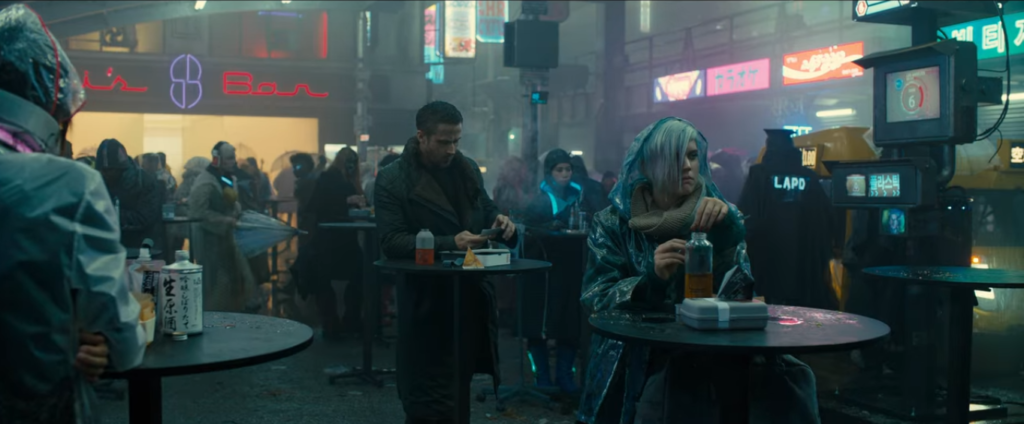
The characters and the acting are also sublime (a big improvement from the original film, where the only really decent performance came from Rutger Hauer as Deckard’s foe Roy Batty). Blade Runner 2049 contains mostly new characters, with the obvious exception of Harrison Ford returning as Rick Deckard, and two cameo appearances from the original film that are too good to spoil so I won’t even mention them.
The main, and most important, character of Blade Runner 2049 is Officer K, superbly realised by Ryan Gosling. He is a new model Replicant designed solely to be a Blade Runner, yet is also given a full catalogue of memories and emotional responses, just like Rachael was in the first film. However, whereas Rachael was unaware of the fact that she was a Replicant and finding out caused her to have a sort of existential crisis, Officer K is completely aware of the fact that he is a Replicant and what his intended purpose is, and goes about his day completing his duties as required. It is this fact that makes Gosling’s character so interesting; the fact that he has been given human emotions and memories yet knows that he is not human and is able to deal with that – so well in fact that he is even referred to as “Constant K”. Obviously the film throws a spanner in the works that disrupts K’s carefully modulated existence, but it is intriguing to see how K is able to maintain his lifestyle in the opening act of the film whilst knowing his true reason for existence. Gosling exercises the necessary restraint required in this performance – K is emotionless yet undeniably expressive. He is a being who has been required to suppress his humanity throughout the duration of his existence yet is now suddenly inundated with life-shattering information that requires deep feeling, and Gosling plays both brilliantly.
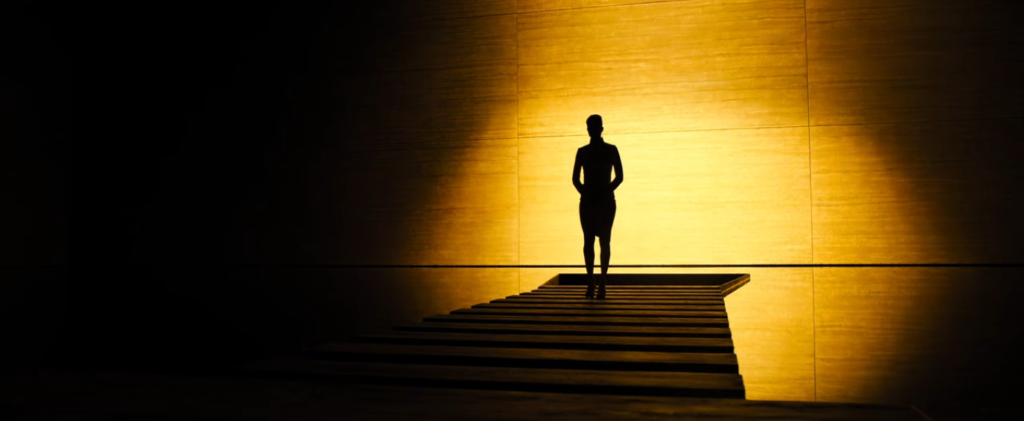
Another thing that Blade Runner 2049 does better than its predecessor is creating a romance between the main character and their love interest. Joi, played wonderfully by Ana de Amas, is a holographic AI available for anyone to purchase and customise to their liking. Despite both being technically not real, there is a real tenderness between K and Joi that makes their relationship believable. Joi is a fully fleshed-out character in her own right (Blade Runner 2049 treats its women much better than the first film, thankfully) and provides support and guidance to K, not merely just existing to be aesthetically pleasing.
Then there’s Harrison Ford, who is still just as Harrison Ford as ever. You can get all of the information that you need about his performance from that sentence alone. Rick Deckard is still the same aloof alcoholic that he was in the first film, however a lot has happened to him in thirty years. There is no real issue with Ford’s performance in the film other than the fact that it was heavily over-hyped in the film’s trailers. We were absolutely saturated with promotional material featuring both Ford and Gosling, and he has top billing alongside the younger star. This led us to believe that he would be a main player in the film, however in reality his part in the story is much more minor. This is K’s story, plain and simple, and that works in terms of plot reasons and action sequences. Whilst Ford can still take a hit and give one back twice as hard, his days of chase scenes through desolate apartment complexes and roof-top fights are probably behind him (although he is starring in the new Indianna Jones film so who knows?).
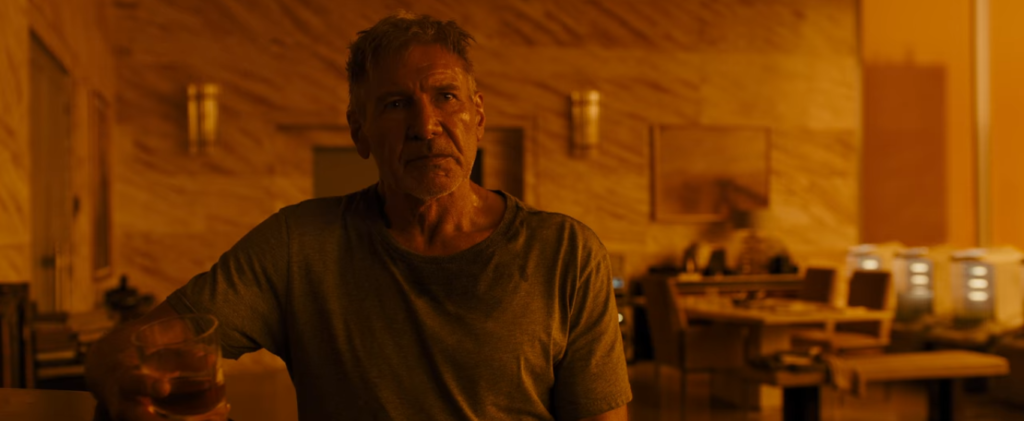
Speaking of over-hyped performances, there’s Jared Leto’s performance as Niander Wallace, the blind, brilliant and boastful visionary who has taken over the Tyrell Corporation from the original film, incorporated it into the Wallace Corporation and has created a new type of Replicant. Now, Jared Leto is by no means a poor actor. If you have ever seen Requiem for a Dream or Dallas Buyer’s Club you know very well that Jared Leto is by no means a poor actor. It’s just that he is not given a lot to work with in this role, and anything that he does bring to the film is arguably overshadowed by yet more strange stories of his method acting (apparently he wore his milky-eyed contacts throughout the entire process of filming and “lived” as a blind man). He does a good job with what he’s given and it’s a role that is expanded upon more in the 2036: Nexus Dawn short released by Villeneuve online, but if you haven’t seen that (and you should, along with the other tie-in shorts, by the way) Wallace is a minimal presence in the film.
I mentioned before that Blade Runner 2049 does a better job of creating interesting roles for women than Blade Runner did. There’s Joi, the love interest, who also helps further the plot rather than simply just being there to look good. There’s Lt. Joshi (Robin Wright), K’s superior, who is strong and intelligent. There’s Luv (Sylvia Hoeks), the enforcer from the Wallace corporation who is essentially the film’s main antagonist. I like the fact that all of these roles are distinct and all have an important impact on the film’s progression.
Blade Runner 2049 does have its weaknesses, though, and the areas that it has less success in are the areas that made the original Blade Runner the iconic cyberpunk work it is today – its world-building and its score.
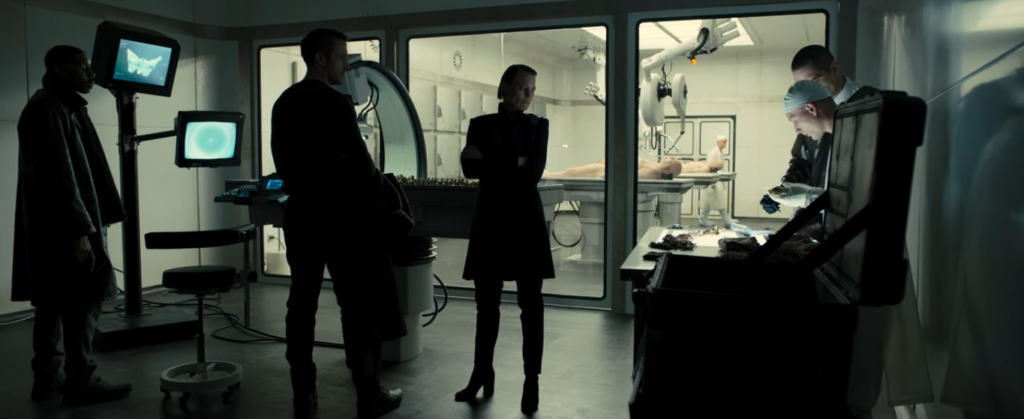
Blade Runner 2049 has the city, it has the monolithic apartments and the neon-bright, hundred-metre-wide advertisements (there are even nice call-backs to the original film’s Atari and Pan Am advertisements – even more laughable in 2049 than they were in the original’s setting of 2019), however, the city doesn’t quite have the feeling of the original, that world that was hyperactive and hyper-coloured yet had that distinctive coating of dystopian dirt that let us know that people had lived this way for fifty years and they would for another fifty years after. Blade Runner to me was never so much about the story or the characters but the feeling that I got when watching it – a feeling of absolute awe and amazement that I was privy to a day in the life of this incredible city that was bustling with energy against all odds. However the streets just don’t seem to have the same amount of impact this time around – maybe because we’ve already seen them before. The stand-out sequences in this film are the ones that take us to new places, like inside the Wallace Corporation, the ruined casino or the junk heap. Here the cinematography really shines, and it’s so easy to see why the film won Academy Awards for both cinematography and special visual effects.
Something else that is missing from this film is the decadently futuristic synth score. Whereas the original had composer Vangelis providing a soundtrack so fitting and so admired that people sold dodgy bootleg copies of it for years after (and who could blame them – the opening theme is enough to send chills down your spine), Blade Runner 2049 suffers in this aspect as a result of his absence. Benjamin Wallfisch and the usually faultless Hans Zimmer do a reasonable job in matching the musical tone of the original, but often the score devolves into nothing but loud crashes and bangs that do nothing but annoy. “Rachael’s Song” this is not.
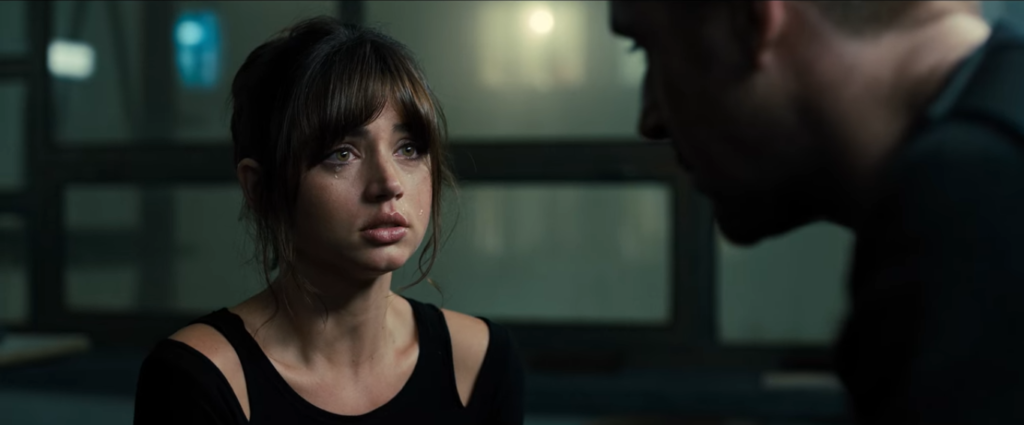
I obviously wasn’t expecting, or wanting, a shot-for-shot remake of the original film. However, it is impossible to talk about this new Blade Runner film without reference to the original. Villeneuve has done a good job in creating a film that is a separate yet respectful addition to the Blade Runner universe that acknowledges the past and expands upon the story of the original whilst telling its own. However, the city of LA lacks both the beauty and the magic sense of lived-in-ness the second time around. So should you watch the film? Well, if you are a fan of the original, you’ve probably already seen it and have your own opinions formed. If you haven’t seen it, I recommend that you do. Just like watching the original, it’s an experience you won’t forget.
BEST BITS
– Ryan Gosling’s performance.
– The desert location is probably my favourite “new” place. I just love how everything is saturated in this golden light but it’s no longer the light of wealth, like Tyrell’s apartment in the first film, it’s destruction.
WORST BITS
– Harrison Ford and Jared Leto were both way too over-hyped in this film.
– The city of Los Angeles is not as awe-inspiring this time around.
More like this: Should You Watch Blade Runner?
